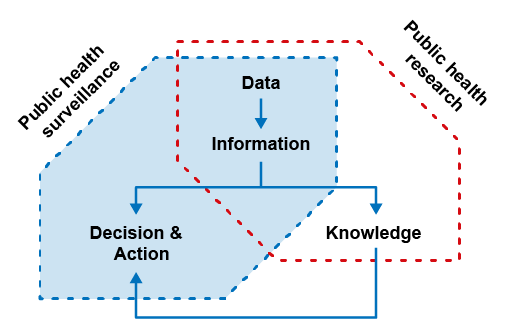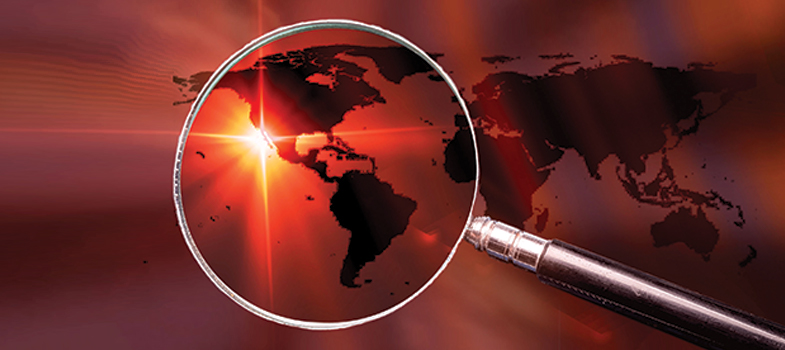1.1 What is the difference between surveillance and research?
The continuous collection, analysis and interpretation of data to provide evidence for decision-making and action in public health (Figure 1) is an attribute of surveillance. This sets it apart from other undertakings involving data capture and analysis for research, for example. Research generally aims to widen knowledge on a particular topic, the need for which is often guided by surveillance (Figure 2). Another attribute which distinguishes surveillance from research is that surveillance makes practical use of what is easily available, often making it cheaper and easier to perform in the long term than a comprehensive prospective research study. This allows for long-term applications. Research, on the other hand, is a ‘best practice’ method that typically takes place over a short period of time and is often resource-intensive. During the course of surveillance, there may be some pragmatic considerations about how information is collected (for instance, making information easier and/or quicker to gather). Surveillance and research can overlap in some of the data being collected (see Figure 2), but the purpose of the two activities is different.

Activity 3: Reflecting on the differences between surveillance and research
Having read about the differences between surveillance and research and familiarised yourself with Figure 2, can you correctly identify the actions below as those carried out either by surveillance or research? Note that the distinction between research and surveillance is not always completely clear, so try to pick whether the activity most likely corresponds to research or surveillance.
- Detection of patterns in infection over time.
- Collection of information on the risk factors for a new form of infection.
- Making use of routinely generated hospital disease event data.
Answer
- Detection of patterns in infection over time – most likely surveillance as over periods of time.
- Collection of information on the risk factors for a new form of infection – most likely research as new form of infection.
- Making use of routinely generated hospital disease event data – most likely surveillance as routinely generated data.
1 What is surveillance?




